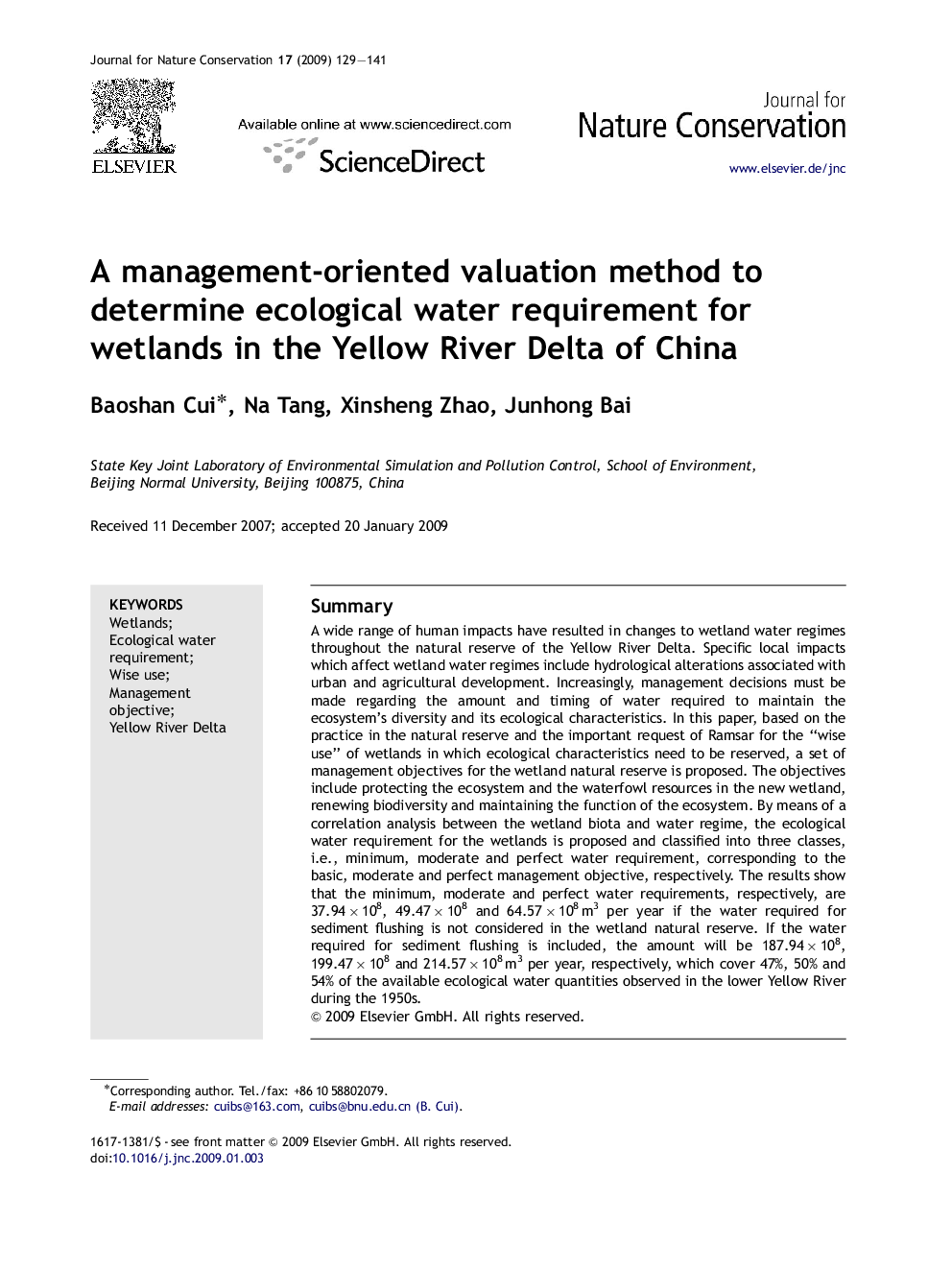| Article ID | Journal | Published Year | Pages | File Type |
|---|---|---|---|---|
| 4400139 | Journal for Nature Conservation | 2009 | 13 Pages |
SummaryA wide range of human impacts have resulted in changes to wetland water regimes throughout the natural reserve of the Yellow River Delta. Specific local impacts which affect wetland water regimes include hydrological alterations associated with urban and agricultural development. Increasingly, management decisions must be made regarding the amount and timing of water required to maintain the ecosystem's diversity and its ecological characteristics. In this paper, based on the practice in the natural reserve and the important request of Ramsar for the “wise use” of wetlands in which ecological characteristics need to be reserved, a set of management objectives for the wetland natural reserve is proposed. The objectives include protecting the ecosystem and the waterfowl resources in the new wetland, renewing biodiversity and maintaining the function of the ecosystem. By means of a correlation analysis between the wetland biota and water regime, the ecological water requirement for the wetlands is proposed and classified into three classes, i.e., minimum, moderate and perfect water requirement, corresponding to the basic, moderate and perfect management objective, respectively. The results show that the minimum, moderate and perfect water requirements, respectively, are 37.94×108, 49.47×108 and 64.57×108 m3 per year if the water required for sediment flushing is not considered in the wetland natural reserve. If the water required for sediment flushing is included, the amount will be 187.94×108, 199.47×108 and 214.57×108 m3 per year, respectively, which cover 47%, 50% and 54% of the available ecological water quantities observed in the lower Yellow River during the 1950s.
